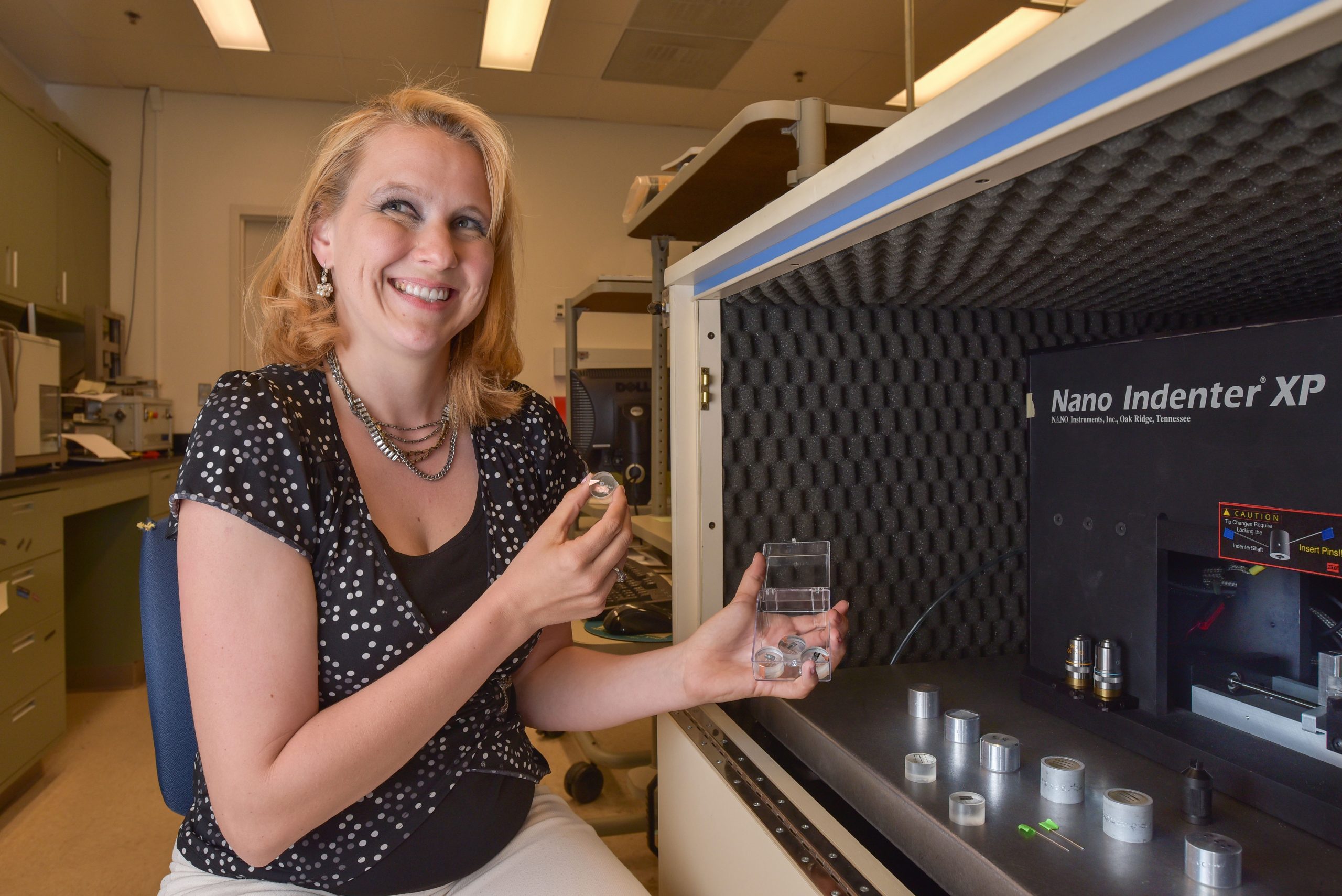ALBUQUERQUE, N.M. — Sandia National Laboratories materials engineer Melissa Teague has been awarded a Presidential Early Career Award in Science and Engineering (PECASE), the highest honor the U.S. government bestows on science and engineering professionals in the early stages of their research careers.

Teague was recognized for pioneering improved characterization of mixed uranium and plutonium oxide after it has been used as fuel in a nuclear reactor for an extended time — a condition called “high burn-up.” Developing and applying advanced examination techniques for high-radiation samples, she used an ion beam to prepare successive thin sections of the fuel, characterized each section and then reconstructed the three-dimensional sample for further study.
“These experimental activities are groundbreaking for their first-of-a-kind data obtained on high-burnup MOX [mixed oxide nuclear reactor] fuel and the first three-dimensional reconstruction of irradiated fuel,” wrote recently retired Department of Energy assistant secretary for nuclear energy Peter Lyons in support of Teague’s PECASE application. “Furthermore, this technique was applied to fast-reactor MOX fuel that has the highest burnup known, providing data that is highly relevant to domestic and international advanced fuel programs.”
Her work at Idaho National Laboratory was done at the mesoscopic level, a relatively underexplored range compared with atomistic and macroscopic investigations of fuel behavior.
Teague signed on at Sandia only within the past year and looks forward to exploring a wider range of materials at the Albuquerque lab.
But she’s no stranger to Sandia. As an undergraduate in ceramic engineering at the University of Missouri-Rolla, she was mentored by Sandia researchers in 2004, growing and testing zeolite membranes, and again in 2005, when she tested a variety of glass-steel seals.
“I’m happy to be a role model to show that a woman with three children can succeed in her work,” she said.
She made an early stop at the Knolls Atomic Power Laboratory before joining Idaho National Laboratory, where she worked from 2010 to 2015 while earning her doctorate in materials science from the Colorado School of Mines. At Idaho National Laboratory, she was appointed deputy director for the laboratory’s TerraPower Program, a roughly $10 million-a-year project that examined the feasibility of traveling wave nuclear reactors as part of a cooperative research agreement with TerraPower, Inc., a Bellevue, Washington startup. The proliferation-resistant reaction breeds its own fuel, using the wave of extra neutrons from fissioning uranium-235 to transmute uranium-238 to plutonium-239.
“The reaction only enriches as it goes,” she said. “It breeds Pu-239 as it burns it. Since it enriches its own fuel, it can last for 40 years instead of the standard two, so you don’t have to transport fuel back and forth as often.”
The private company has announced plans to build a demonstration plant in China.
Among Teague’s awards are the Massachusetts Institute of Technology’s Rising Star Award in Nuclear Science and Engineering, the Young Scientist Award from the European Materials Research Society and the Department of Energy Nuclear Energy Enabling Technologies award, meant to further the close integration of experimentation with mesoscale modeling.
Her PECASE award, while unaccompanied by a stipend, “should make it easier to get funding” for her work primarily analyzing brittle materials, providing data for modelers and testing their simulations, she said